Can You Start Your Seedlings with LED Lights?
Do LED lights work for seed starting? Yes, they do! Learn about LED lighting benefits and setup for a prosperous garden this year.
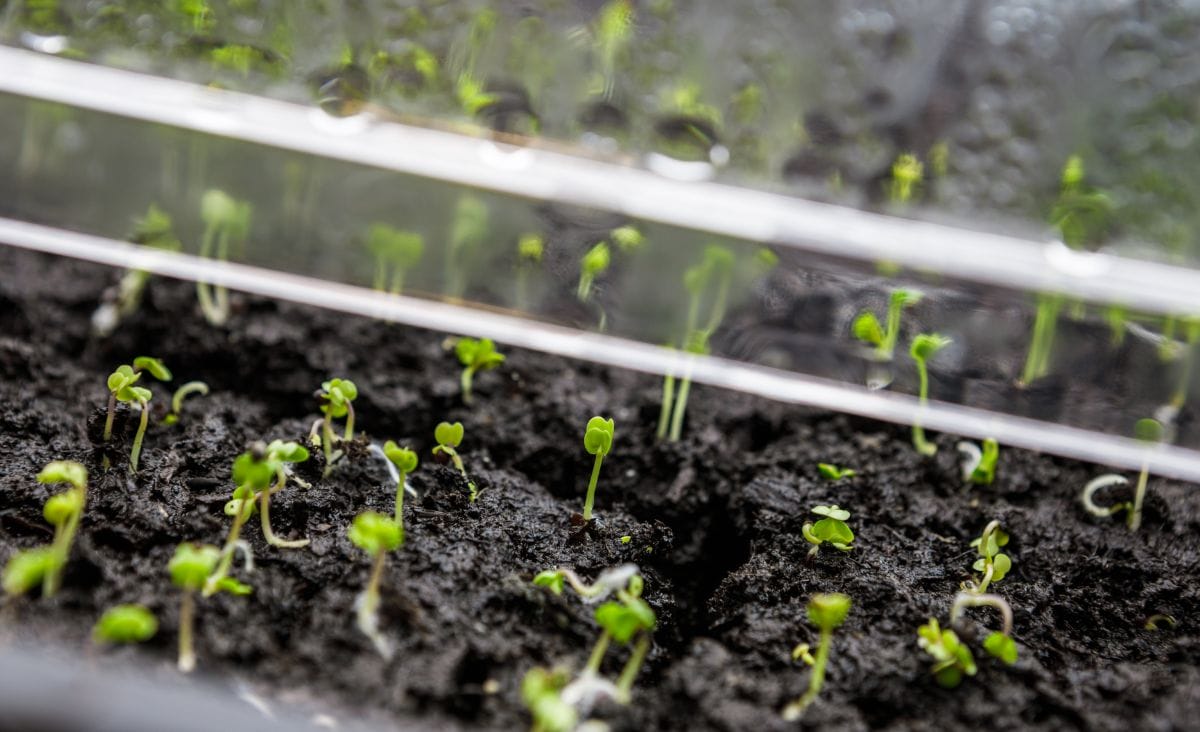
Starting seeds indoors is an exciting way to jumpstart the growing season, but getting the right light setup can make or break your success. Many gardeners wonder if LED lights can be used instead of traditional grow lights—and the answer might surprise you.
LED lights have revolutionized indoor gardening, offering an energy-efficient, long-lasting, and highly effective way to start seeds. But do they really measure up to traditional grow lights? In this post, I’ll break down why LED lights work for seed starting, how to set up your grow light system properly, and what to watch for to ensure your seedlings thrive. Whether you’re a beginner or looking to refine your setup, this guide will help you get the most out of your indoor seed-starting experience.
Why Choose LED Lights for Seed Starting?
Because they are efficient, effective, and have a positive effect on plant growth, LED lights have become the best way to grow seeds into bright, healthy plants.
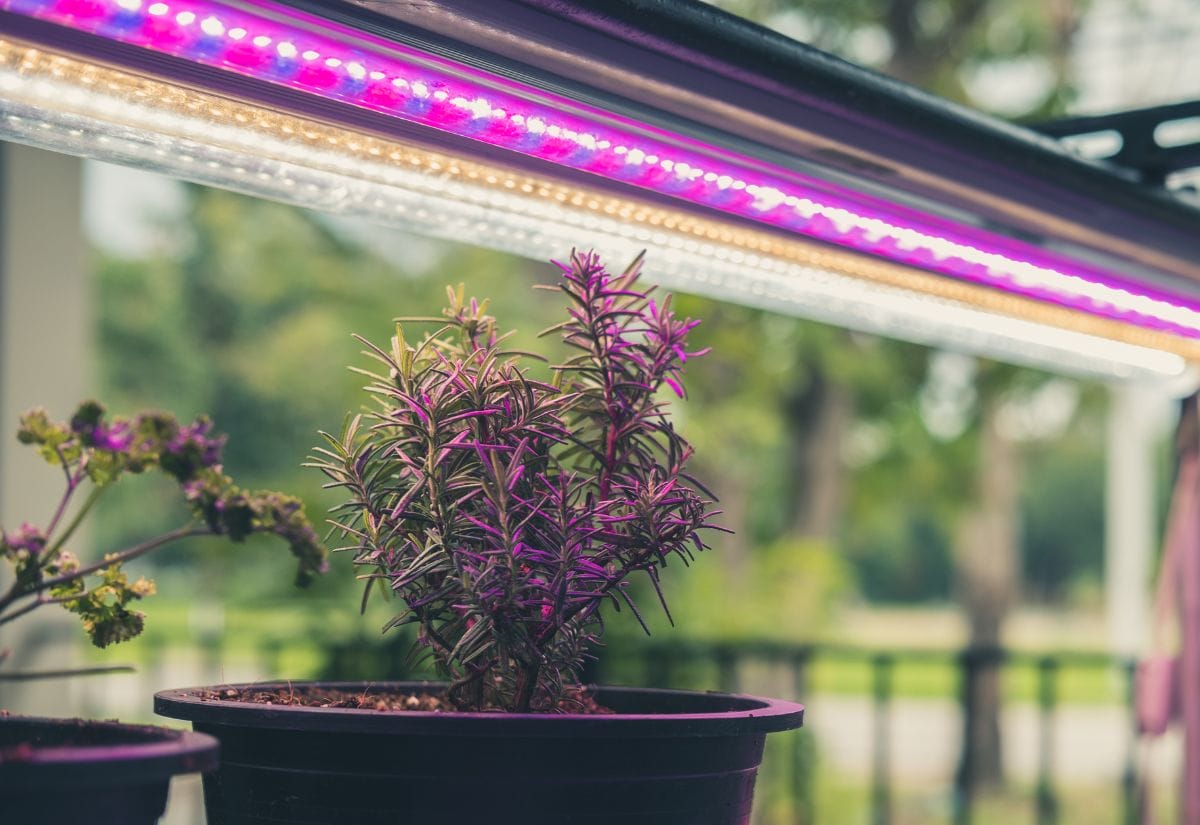
Energy Efficiency
LED lights use a lot less electricity than regular grow lights, so they are better for the environment and save you money. LEDs use less energy without sacrificing performance. In fact, they give off the best wavelengths of light for plant growth, which can help seeds sprout faster and grow stronger.
Longevity
When compared to fluorescent or incandescent bulbs, LED lights last longer. LED grow lights can last up to 50,000 hours, which means they do not have to be replaced as often and are easier on the wallet.
Targeted Light Spectrum
For photosynthesis and growth, plants need certain wavelengths of light. The blue and red wavelengths of light are very important for plant growth and can be engineered into LED lights so that they give off the right spectrum of light for plant growth.
Low Heat Emission
A problem with some older grow lights is that they make a lot of heat, which can hurt young seedlings. The low heat output of LEDs makes it easier to keep the right temperature for seed germination without risking overheating your plants.
Setting Up Your LED Grow Light System for Seed Starting
Let us talk about the steps you need to take to set up the best LED lighting so that your young plants get just the right amount of light from germination to transplanting.
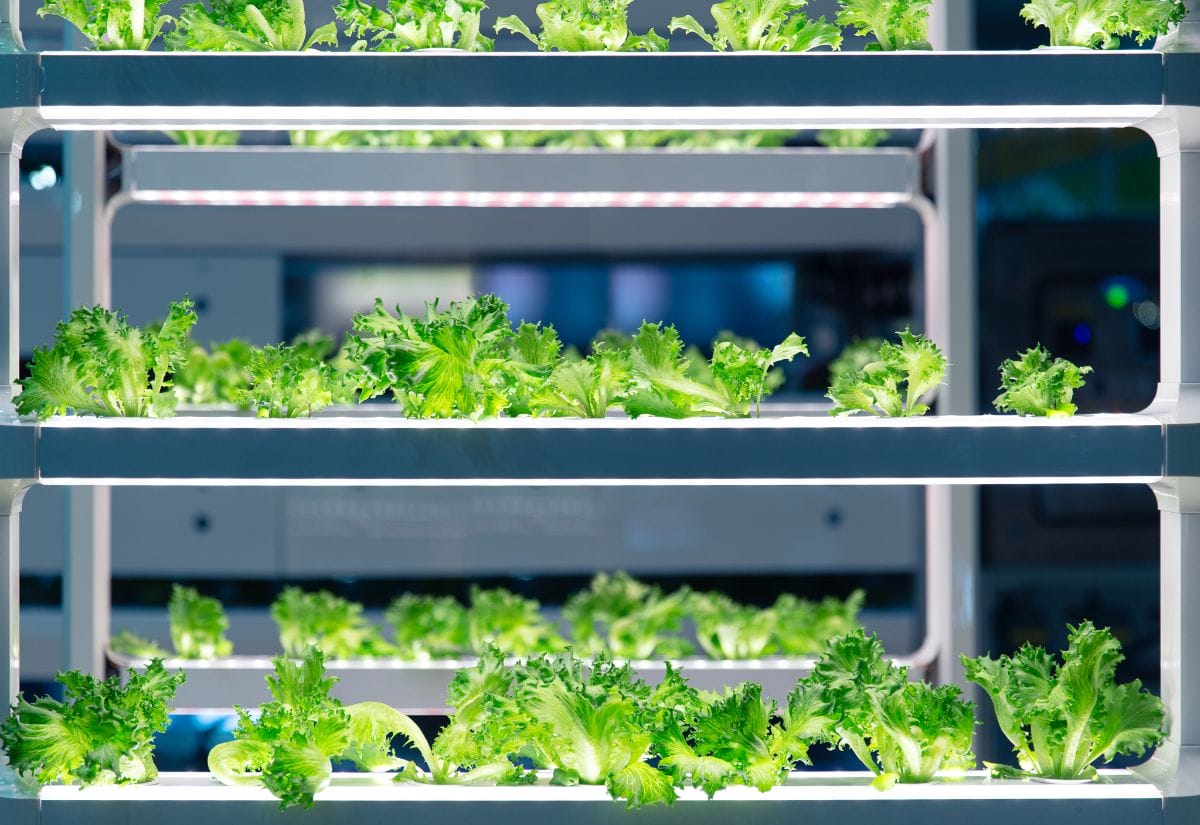
Choose the Right LED Grow Light
Look for lights that are made to help plants grow. These are often called “grow lights.” The light spectrum in these will be right for your seedlings.
There are many varieties of grow lights available. Small clip-on lamps with grow bulbs are available for smaller setups. These are 6000K full-spectrum lamps with 5-level dimming options and automatic on/off timing. For larger setups, hanging lamps that can be suspended over your seedling shelves are the way to go. These 2’ T8 growing strip lights are just the ticket. If you don’t have the shelves and you’re starting from scratch, there are complete setups that have pre lit shelves to get you going strong right from the start.
Positioning Your Lights
How far apart your seedlings should be from your LED lights will depend on how bright the lights are. As a general rule, the lights should be 24 to 36 inches above the plants. However, check the manufacturer’s instructions to be sure. To keep your plants from burning or stretching, change the height as they grow.
Timing is Key
Seedlings require a lot of light—typically 14-16 hours a day. Use a timer to ensure they receive consistent light each day, mimicking the natural cycle of day and night. This consistency is crucial for healthy growth.
Monitor and Adjust
Keep an eye on your seedlings as they grow. They may not be getting enough light if they look long or stretched. You may need to move the lights closer. If, on the other hand, you see signs of drying out or burning, the lights may be too close.
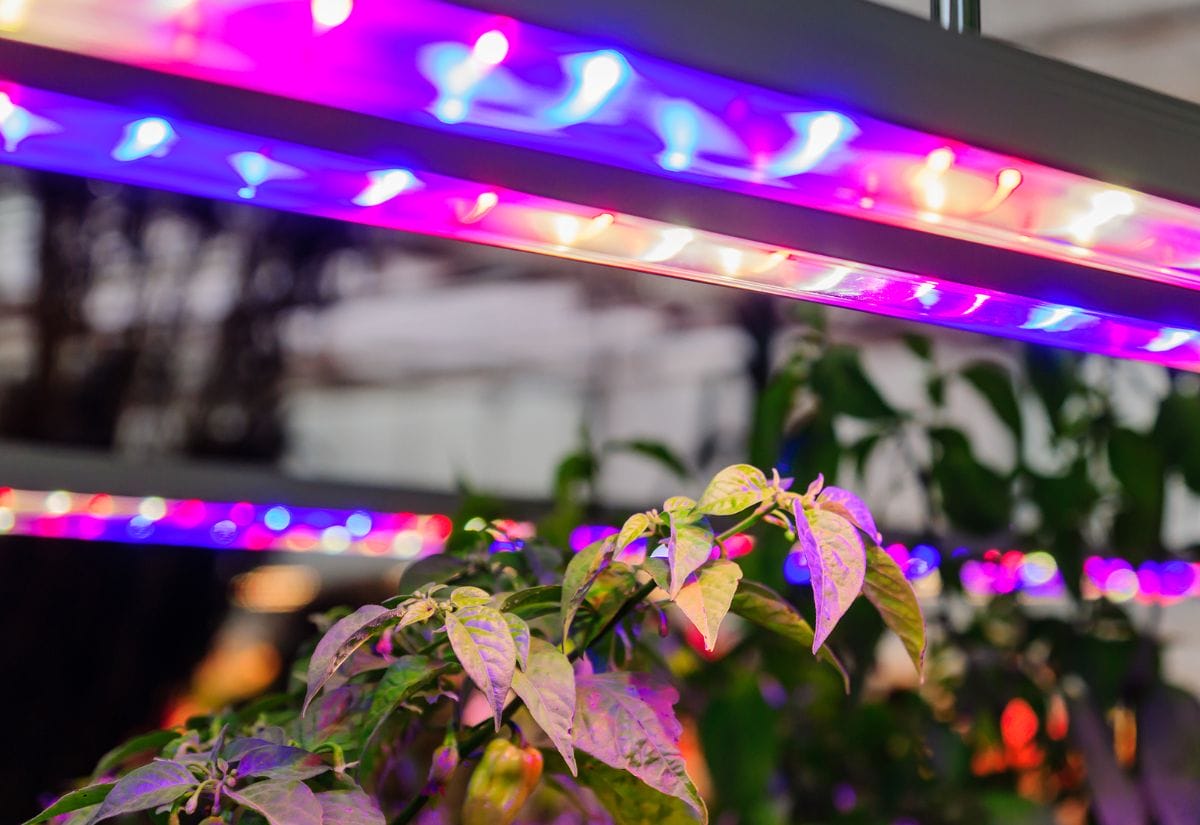
Common Questions About Using LEDs for Seedlings
One thing I’ve learned from using LED lights is that placement matters—a lot. I once set my LEDs too far from my seedlings, and they ended up leggy and weak. Now, I always test different heights and adjust based on how my plants respond. If your seedlings look spindly, bring the lights closer. If they’re looking pale or burnt, move them higher. Observing your plants is just as important as having the right equipment!
Alternatives to LED Grow Lights
- Fluorescent Lights (T5 or T8 Bulbs): These have been a staple for years and work well but aren’t as energy-efficient.
- Compact Fluorescent Bulbs (CFLs): A budget-friendly option that provides decent light, though not as tailored to plant growth.
- Natural Light with Supplemental Lighting: If you have a bright, south-facing window, pairing it with a smaller LED or CFL light can be a great alternative to a full grow setup.
Don’t lose these LED seed-starting tips—Pin now!
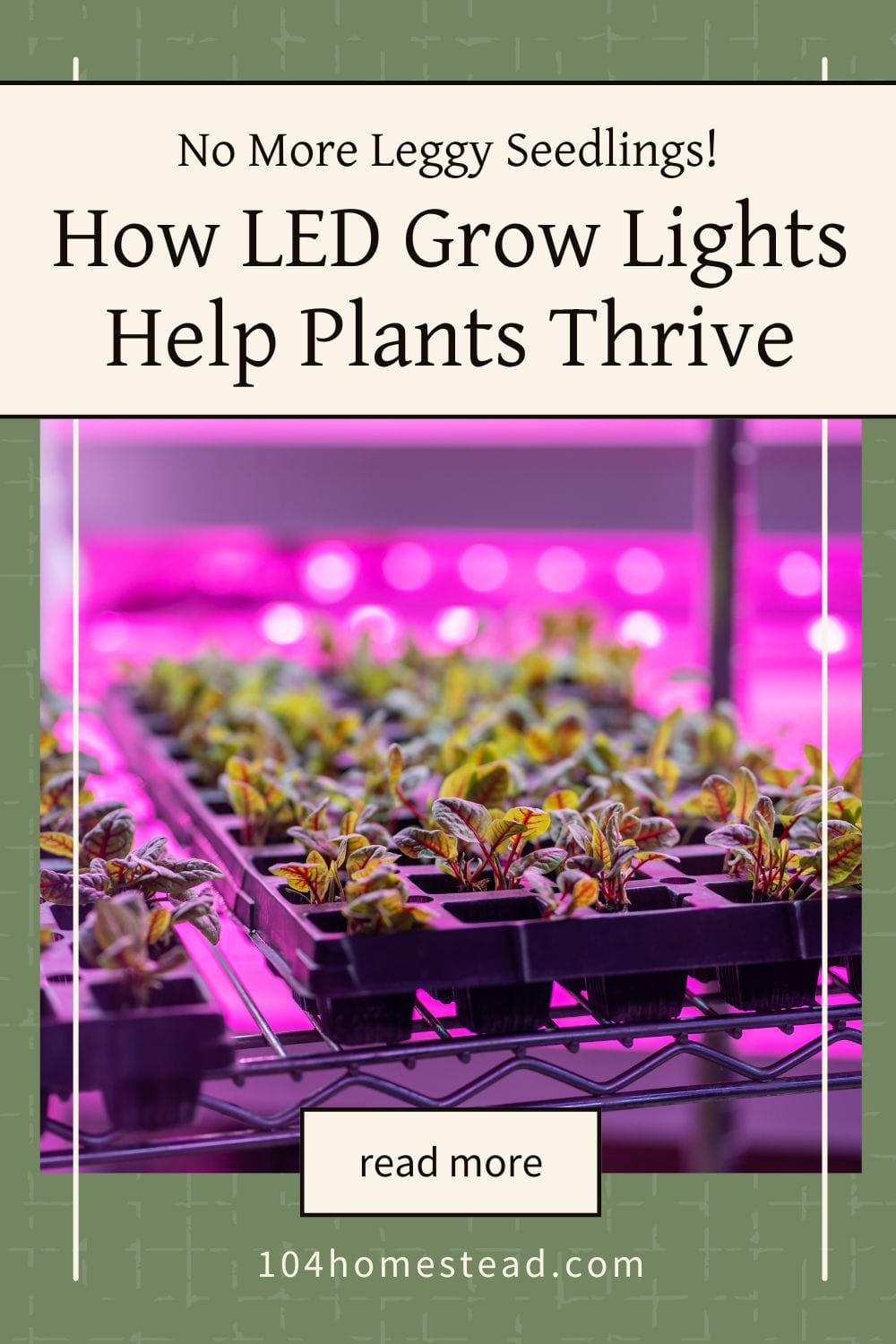
LED lights offer an energy-efficient and highly effective way to start seeds, helping young plants develop strong roots and sturdy stems before transplanting. By understanding how to position your lights, adjust for proper exposure, and fine-tune your setup, you’ll set your seedlings up for success.With the right LED grow light setup, you can take control of your indoor gardening and give your plants the best possible start.
Strong seedlings need more than just light—they need the right environment to thrive. If yours are looking weak or stretched, learn how to prevent legginess. Choosing the best soil mix is just as important for healthy growth, and knowing how many seedlings to start ensures you don’t overcrowd or waste space. Not sure whether to start seeds indoors or direct sow? Explore the benefits of each method to find what works best for your garden.
Have you tried using LED lights for seed starting? What’s worked (or not worked) for you? Share your experiences and any tips in the comments below!





